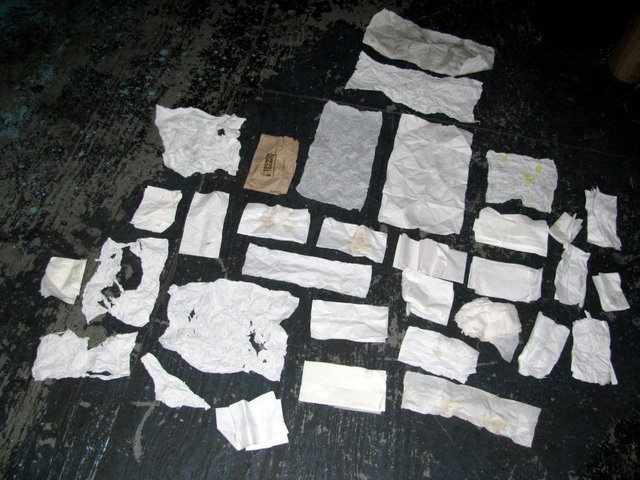Introduction[edit | edit source]
This is an ongoing challenge, to treat wastes as materials, and to inventory as you would any useful material. to reconcile and balance in the same way you would your money. This can be done for any period of time, in various forms. The only uniform goal is think critically about the waste products associated with your daily life, and remove futility from the Material life-cycle.
This project is best executed with more than one person, to encourage to discuss between participants, but can be completed alone.
When a material (i.e. a paper cup) comes in contact with your person, it is assumed that you have considered it functional (or potentially functional) to yourself, and therefore taken responsibility for the material for the remainder of the time period. At no point during the game can it be deemed futile. All materials acquired during the time period must be eventually turned from potentially functional to functional within the agreed upon period.
Before beginning the project, all participants should agree upon:
- Acquisition Period "(i.e. 1 month)"
- This is the period in which you acquire materials
- Reuse Period "(i.e. 2 weeks)"
- This is the period in which you must transfer all leftover potential materials into functional materials, after the acquisition period is over
- Exceptions "(i.e. toilet paper)"
- These are materials that would typically fit the criteria listed above, but which you would like to exempt from the project for whatever reason. Ideally you would have as few exceptions as possible, but it's better to do the project with exceptions than not at all.
During the game, you will probably think differently about your time period, reuse period, and exceptions. This is normal, but attempt to stick to your original rules for the remainder of the time period, for continuity's sake. You can always do the project again with new rules.
Consider questions such as:
- What materials am I responsible for?
- What does it mean for a material to be considered functional?
- What does it mean for a material to be considered potential?
- What does it mean for a material to be considered futile?
- Why are exceptions necessary?
- Why do projects like this make people upset?
Example Challenge[edit | edit source]
Below is an outline of how the challenge was executed by Joe Ahearn.
- Acquisition Period = 1 month (October 2009)
- Reuse Period = 1 month (November 2009)
- Exceptions
- Toilet Paper
- Food Waste
- Containers returned at point-of-purchase "(i.e. electronics packaging, paper plates)"
The inventory of unused materials at the end of the time period found here.
A summary of materials acquired is: "paper cups, paper plates, plastic silverware, candy wrappers, inhaler, pill bottle, glass bottles, cans, plastic bags, paper bags, newspapers, bills, napkins, envelopes, public transit tickets, batteries, tea bags, broken electronics, tinfoil, wax paper, condiment packets, cling wrap, plastic packaging, and food packaging of various types, plus more."
Of the 51 types of materials inventoried, almost 50% (28) couldn't be reused for their original use, because they were broken, one-time-use, or had lost a piece.
